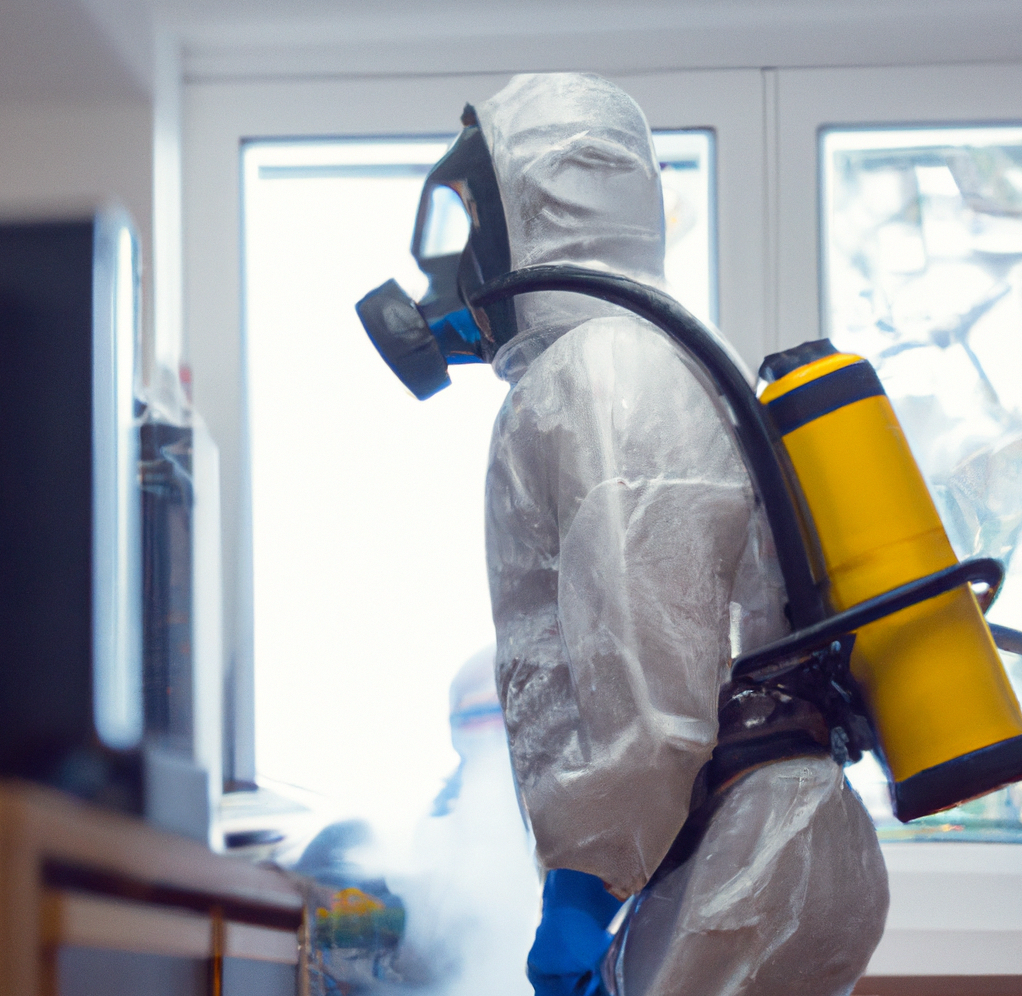Does Mold Fogging Really Work?
While fogging can reduce mold spores, mycotoxins, surface-level mold, and unpleasant odors, it is not an effective way of getting rid of mold on its own. This is due to the fact that mold has a root-like structure known as hyphae, which can extend into places like behind walls where it cannot be seen. Unfortunately, fog cannot penetrate hard surfaces like walls so it can only remediate the surface-level mold and the mold spores in the environment. The hyphae will still be intact and could regrow over time if it is not properly removed. Not to mention that fogging does nothing to address the moisture that caused the mold in the first place.

Is Mold Fogging Safe?
Mold fogging can be safe if done properly, but it carries risk. Those risks can increase or decrease based off of what type of disinfectant used. The CDC warns that coming into contact with certain disinfectants in an aerosolized form can cause skin, eye, or respiratory irritation. If you decide to fog for mold, make sure you wear PPE masks and safety gear and use a non-toxic solution in order to minimize health risks. Do not ever use any antimicrobial pesticide when fogging a property as they contain toxic chemicals that could cause you health issues.
How Effective is Fogging for Mold Remediation?
Although fogging is not an effective solution for mold remediation on its own, it does help to some degree. Fogging is a useful technique for enhancing air quality by binding to mold spores and/or mycotoxins and causing them to become heavy and fall to the ground. This creates a bunch of dead mold droplets on the floor. Once this occurs, a fogging professional can proceed to utilize a HEPA vacuum to eliminate the substances that have settled on the floor. While this doesn’t get rid of the root cause of the mold it is an effective way to reduce the amount of mold spores, mycotoxins, surface-level mold, and unpleasant smells in your property.
Does Fogging Kill Mold Spores?
While fogging reduces mold spores in the environment and improves indoor air quality, it isn’t able to get rid of the source of mold spores because the mold might still be living behind walls.
Best Mold Foggers to Buy
The best fogger for mold is one that sprays fine particles. A dry fogger usually produces particles that are smaller than the particles produced by a wet fogger, so for that reason it is probably better at catching mold spores. Not to mention that dry foggers are “dry” and therefore don’t add as much moisture to the environment. This is generally good when dealing with mold because mold needs moisture to grow.
How to Use Mold Foggers
It is always recommended to review the manufacturer’s instructions before using a mold fogger. That being said, here’s the general process:
1. Review the manufacturer’s instructions to get an estimate of the fogging duration and product quantity required for the specified area.
2. Pour the cleaning solution into the fogger tank and secure the power head by fastening the clamps.
3. Place the air intake filter over the air intake
4. Remove or cover any items that may be damaged if they get wet.
5. Position and activate the fogger in the space
6. Adjust the flow rate to avoid over-application on surfaces.
7. After fogging, allow the mist to dissipate for 15-20 minutes and wipe any excess moisture from the surfaces.
8. Allow surfaces to dry overnight.
9. Remove the suction tube and operate the fogger for one minute on high to clear any remaining solution from the system.
Do Mold Bomb Foggers Really Work?
Mold Bomb is a fogging product created by Biocide Laboratories to be an affordable way for homeowners to fog their own homes. Mold bombs like other forms of fogging are not an effective stand-alone solution for remediating mold but can still be helpful in the ways we previously discussed.
What is Dry Fog Disinfection?
Like wet fogging, dry fogging dispenses disinfectant in the air but dry fogging disperses the cleaning solution in a vapor instead of a fine mist. This is particularly helpful when it comes to mold because mold needs moisture to grow so ideally you want to reduce the amount of moisture available to it. Dry fogging also produces particles that are smaller than a wet fogger so it is more useful at catching mold contaminants.
Does Dry Fog Mold Removal Really Work?
While dry fogging has the benefit of reducing the amount of moisture it adds to your property, it is still not an effective standalone method of mold remediation. That being said, it still has potential to help by reducing mold spores, mycotoxins, and unpleasant odors.
How Much Does Dry Fog Mold Removal Cost?
Dry fogging costs anywhere from $200-$1,000 on average depending on the size of the property.
Conclusion
Although fogging can help decrease mold spores, mycotoxins, surface-level mold, and unpleasant smells, it is not a sufficient method to eliminate mold entirely. For that, it’s best that you call a professional mold remediation company like ourselves. Call now for a free quote!